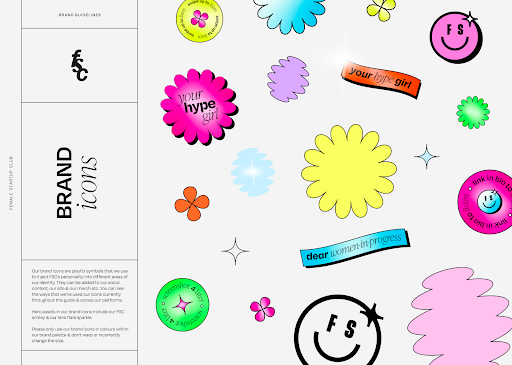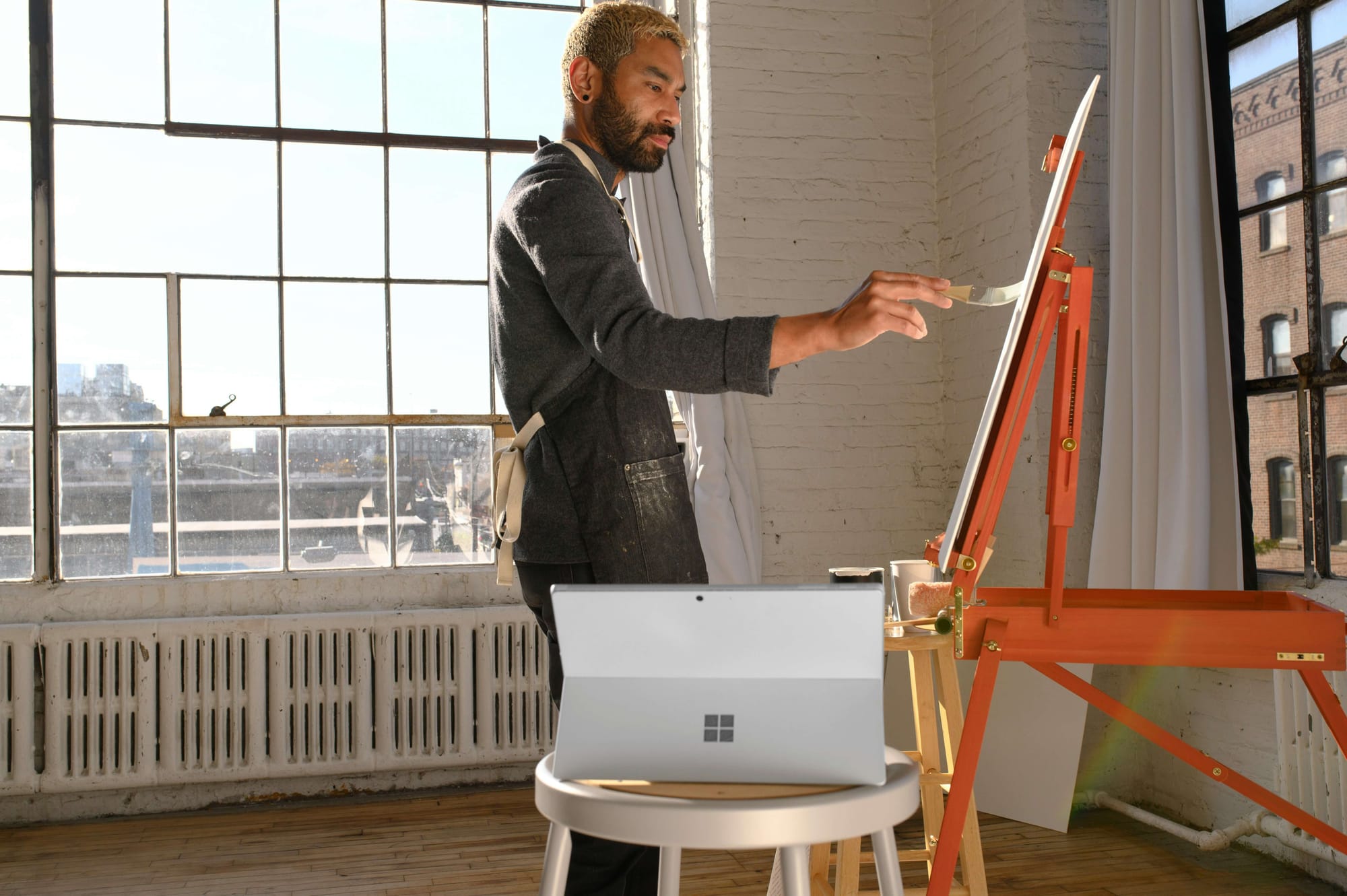
From Passion Project to Multi-6-Figure Business: How I Grew and Monetized My Podcast
Despite having no experience in journalism or building a company, Doone Roisin managed to turn her podcast for female founders into a thriving business in just a few years. Here are some of the strategies that helped her get there.

Founder of Female Startup Club
When I launched the Female Startup Club podcast at the end of 2019, I didn’t have any grand plans or intentions for what it might look like in the future. At the time, I was reading Tim Ferriss’ Tools of Titans, and I noticed that hardly any women were featured. While I enjoyed the book, I wanted a space to hear that same energy from women.
I tried hosting IGTV interviews with female founders but quickly realized that many viewers struggle to watch a long conversation, so I pivoted to podcasts. I reached out to everyone I knew with a story to tell, sat down with a mic on my bedroom floor, and started recording. I had no experience in reporting or journalism. I was not confident in public speaking (in fact, I was terrified!). But I also had nothing to lose and a whole lot of passion when it came to amplifying these voices.
Despite my lack of experience or strategic planning, the podcast took off. Within just a few years, I’ve not only grown it into a show in the top 0.5 percent of podcasts globally, but I’ve also built a business around the podcast that makes multi-six-figures of annual recurring revenue from sponsorships, ads, and our private community, Majic.
Read on to learn some of the strategies that helped me quickly grow an audience and make money from my work. I hope it inspires you to go ahead and launch your idea, too!
1. I got support before anyone told me I could
There’s a lot of podcasting advice out there that says you should wait until you have tens of thousands if not hundreds of thousands of downloads before going out to pitch sponsors. But, when I was at about 4,000 downloads, I knew I needed a distribution partner (and some cash to make this project sustainable). So, I went ahead and started pitching sponsors anyway. I came up with a list of ten brands that aligned with Female Startup Club and sent them all a message about my vision and target audience.
As luck would have it, one of these brands was looking for podcasts to sponsor targeting my exact audience. One surprisingly casual call later, they signed a $25,000 deal to sponsor us for a year. Thanks to a combination of the right message landing on the right desk at the right time, I now had the cash and the accountability to put out at least three episodes a week for the next year—and it never would have happened if I hadn’t been willing to jump before I felt ready or before anyone gave me “permission” to.
The excuse not to get started on *that thing* is always going to be there. If I hadn’t just gotten started, I wouldn’t have had hundreds of interviews under my belt today, wouldn’t have a thriving business that’s employing five additional people (two full-time, three contractors), wouldn't have been awarded Young Australian of the Year in 2022, and so much more.
2. I leveraged the networks and reputations of my guests to grow
When it comes to building a successful business, I swear by the power of collaboration and amplification. This podcast wouldn’t exist without my guests, and the built-in distribution channel they gave me has been so key.
For instance, when I landed Sarah Lee and Christine Chang from Glow Recipe—two of the biggest entrepreneurs I’d had on the show yet—through some dogged cold outreach, I knew I had to make the most of this opportunity to grow our credibility by sheer connection. I emailed all my dream guests in our database saying, “These people are coming on the show. Do you want to come on the show too?” Sarah and Christina became an anchor that led to more interest from other influential people because they wanted to get in on that bandwagon.
We also collaborate with each guest to leverage their audience for promoting their episode and growing our reach. After each episode, I’d create assets for social media and send them to the guest, encouraging them to share with their audiences. I eventually found that most guests were slow to post themselves, but when we posted something on our channel and tagged them, they were more than happy to repost.
More recently, we’ve ramped up this strategy so we can guarantee leveraging our guests’ audience. We’ve included a clause within our guest onboarding process that reads: “By agreeing to our Podcast T&C's, guests confirm they will accept Instagram collaboration requests for a minimum of seven days to their largest audience (founder or brand account).” This has been a real game-changer: A guaranteed appearance on our guests’ feed can easily earn us hundreds of followers in a couple of hours.
Over time, this focus on connection has compounded to grow our audience to over 100,000 followers across channels, and establish us as one of the thought leaders in the industry.
3. I market the way I'd like to be marketed to
In all of my marketing, I’m essentially creating the type of content that I would be interested in, because that’s the content that was missing when I was inspired to create the podcast in the first place. (I also, thankfully, am my own target audience.) If I’m ever stuck, I just ask myself: If I were a listener, is this something that would appeal to me?
For instance, when naming the podcast, I considered including my own name, but then thought about how I search for content online. If I was looking to find a podcast like mine, I’d go to Google or my podcast app and search for things like ‘female entrepreneurship,’ ‘female founders,’ or ‘female startups.’ Using those keywords, I came up with Female Startup Club. Nine out of ten times when I ask a listener how they found the show, they say it was from a similar keyword search, and smart naming definitely helped me gain a lot of early traction.
I also love browsing around the podcast library to see what catches my eye. Taking this into consideration, creating a bold visual brand for FSC became a huge priority. A few years in, it's this vibe that followers often say attracted them to join the community.

4. I transformed my audience into a thriving community (and a new revenue stream)
One of the many joys of launching this platform is learning from our community of listeners. I’m always asking people to hop into my DMs on Instagram or send me an email about how we can better support them, and I regularly hold one-on-one customer research interviews with founders and future founders to truly understand how we can best support them.
These conversations have led to the latest big evolution in our business: the creation of Majic, our paid membership community for small business owners and entrepreneurs. I kept hearing that our entrepreneur listeners were feeling lonely and wanting more opportunities to network, find mentorship, and bounce ideas off people. Since its official launch in 2022, Majic has become the most amazing group of women who are the ultimate hype girls for each other. Plus, it’s provided a new stream of recurring revenue that allows us to invest into the future of the business and keep the team running.
The lesson: When you have a community invested in the brand, building the business into its next stage is really a collaborative effort between you and your audience.
These approaches have helped Female Startup Club grow a passion project into a successful business faster than I ever could have imagined. And while I know we have so much more to go, I’m confident that the same mindsets—leaping before I’m ready, thinking like a customer, and harnessing the power of connection and community—will continue to take the business to new heights.
Try Buffer for free
180,000+ creators, small businesses, and marketers use Buffer to grow their audiences every month.
Related Articles

Grow your reach, celebrate your community, and keep your feed full with these reposting tips and how-tos.

Stop chasing the tail-end of Instagram audio trends — here are the latest trending songs on Instagram in July 2025.

From subscriptions to UGC to merch — discover 13 ways to monetize your Instagram following, even if you don’t have a large following.